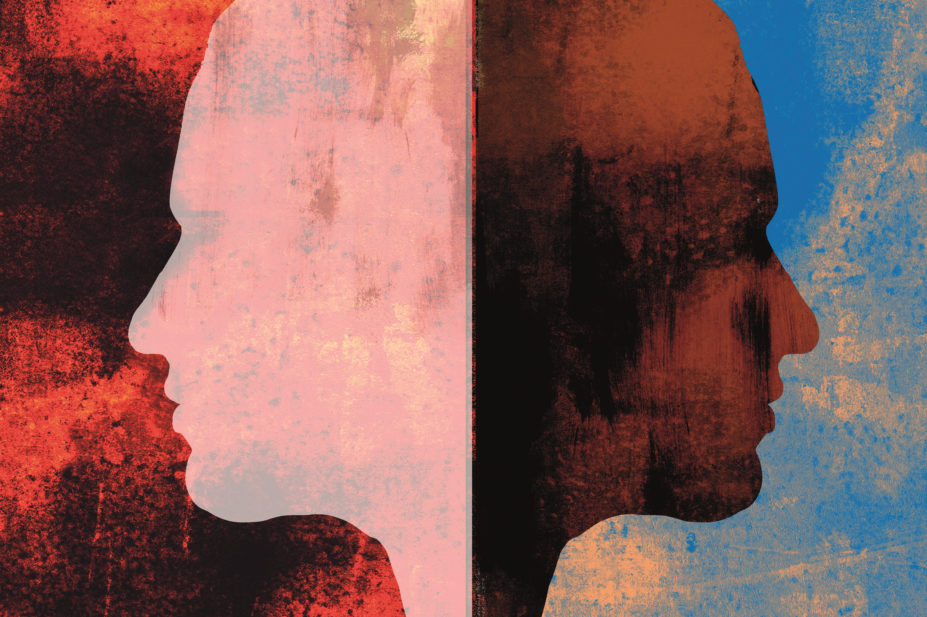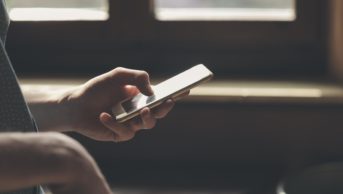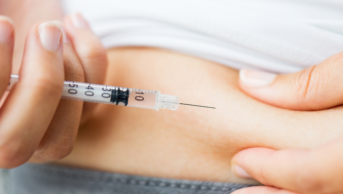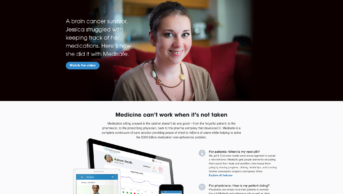
Roy Scott / Ikon Images
In 2013, the British Medical Journal published an article suggesting that the side effects of taking cholesterol-lowering statins may outweigh the benefits for some[1]
. It kicked off a media storm in the UK that peaked in 2014 and is still continuing today. The reporting shone a spotlight on statin side effects — most notably muscle pain — and led an estimated 200,000 patients to stop taking the drug within six months of the coverage. In a few cases per million, statins can cause a life-threatening muscle condition called rhabdomyolysis, but it now seems more likely that a large proportion of reported side effects were not related to any pharmacological cause, but to the nocebo effect — the placebo effect’s evil twin.
The term nocebo comes from the Latin ‘to harm’. In the case of statins, the wider harm has become obvious. A 2016 review suggests there will be at least 2,000 cardiovascular events in the UK over the next 10 years, that will not occurr if these patients continue taking statins[2]
. In the US, a Massachusetts cohort study of 28,000 patients from 2000–2011, found that people who stopped taking statins were 13% more likely to die or have a heart attack or stroke during the study period[3]
.
The nocebo effect is in fact an expectation about negative treatment outcomes
“The nocebo effect is in fact an expectation about negative treatment outcomes,” explains health psychologist Andrea Evers of the University of Leiden in The Netherlands. Almost a polar opposite to the better-known placebo effect, it works through our negative assumptions and conditioning. “For example, there is a high risk that a cancer patient who has always experienced nausea after chemotherapy will expect this adverse side effect, and the anticipatory anxiety [will then] produce the negative expectancy,” explains Evers. While the positive power of the placebo effect is well known, the negative impact of the nocebo effect has been largely ignored.

Source: Courtesy of Andrea Evers
Andrea Evers, health psychologist at the University of Leiden in The Netherlands, says we know warmth, empathy and trust always enhance the placebo effect and make it stronger and reduce the nocebo effect
Many strange and extreme medical events have been attributed to the nocebo effect, including deaths. One reported case from the 1970s describes a cancer patient who died after being told he had three months to live, only for it to be discovered at autopsy that the stage of his cancer had been misdiagnosed and could not have been the cause of death[4]
. A more recent case documented an individual taking part in a clinical trial for antidepressants. He overdosed on 29 capsules and needed to be admitted to hospital for symptoms including severe hypotension. But the adverse symptoms were rapidly reversed when it was revealed he had been taking the placebo[5]
.
The nocebo effect may also be responsible for the phenomenon of mass psychogenic illness, where symptoms with no apparent cause rapidly spread through communities. The phenomenon could explain adverse reactions to Wi-Fi or wind turbines, which have been blamed for headaches, dizziness and fatigue. Some psychologists have even suggested a recent incident at the US embassy in Havana is an example of the nocebo effect. In October 2017, 21 US diplomats reported hearing problems, leading to claims that Cuba had attacked the embassy with a mysterious ‘sonic wave’.
“Unfortunately, the nocebo effect has a huge impact on clinical outcomes, I think maybe more than the placebo effect,” says neuroscientist and nocebo investigator Christian Büchel from the University Medical Center, Hamburg-Eppendorf, Germany. Luana Colloca, a neurophysiologist at the University of Maryland, Baltimore, agrees: “Negative expectations tend to be formed much faster than positive expectations and this has an evolutionary reason — our bodies are programmed to protect us from adverse events.”
Negative expectations tend to be formed much faster than positive expectations and this has an evolutionary reason — our bodies are programmed to protect us from adverse events
The effect can be seen regularly in clinical trials, says Evers. “You see the same number and type of side effects in patients who did not receive any intervention,” she says. “So by only reading the instruction letter the patients can experience the same type and number of side effects [as those who were given the active drug].” Colloca says that another tell-tale sign of the nocebo effect is when negative effects present themselves much faster than a physiological response to the drug could occur.
The suspicion that reported statin side effects were originating from nocebo responses was given a boost in 2017 with the publication of results from the Anglo-Scandinavian Cardiac Outcomes Trial from the UK and Sweden[6]
. The double-blind atorvastatin trial included around 10,000 patients aged between 40 and 79 years with hypertension and other risk factors. It ran from 1998 for just over three years. After this, all participants were offered the opportunity to take part in an open-label phase for a further three years. It was the comparison between the double-blind and open-label phases that pin-pointed the nocebo response.
“Our findings suggest that when the patient and physician do not know whether a statin has been given, the reported adverse events are not hugely different [in the statin and placebo groups], specifically relating to muscle adverse events,” explains Ajay Gupta from the National Heart and Lung Institute at Imperial College London, who is a member of the research team. But, he adds, during the second open-label phase, “compared with non-users, users of statins reported a 41% increase in muscle-related pains.” Gupta says weight is also added to the inference that side effects were caused by the nocebo effect because of the lack of difference in the reporting of lesser-known side effects, such as erectile dysfunction, in both phases. This indicates that when patients had less knowledge of a side effect, reporting of the effect was less likely to occur.
Psychology and biology
The psychological basis of nocebo and placebo responses has been investigated by Giuliana Mazzoni, a psychology and neuroscience researcher at the University of Hull, UK. To better understand our perception of pain in conditions like fibromyalgia, she has used the fascinating rubber hand illusion, where the body is tricked into perceiving sensations in a fake limb[7]
. “Pain is a very subjective experience and the amount of pain that people experience is due to a series of internal convictions and external factors that modulate those convictions, not just the intensity of the pain stimulation,” explains Mazzoni.
Pain is a very subjective experience and the amount of pain that people experience is due to a series of internal convictions and external factors that modulate those convictions, not just the intensity of the pain stimulation
In Mazzoni’s experiment, the participant’s own arm is hidden from their view and a rubber hand placed in front of them. Through a conditioning process of stroking a finger on both the real and rubber hand, the participant starts to ‘feel’ the rubber hand and respond to suggested painful sensations applied to it. Mazzoni then attempted to create a placebo response by administering a cream to the real and rubber hands, and explaining to participants that this had analgesic properties (it did not). Not only did participants feel painful stimulation of the rubber hand (created using a contact thermode device to deliver five seconds of heat) but, after the sham analgesic cream was applied, they reported reduced pain. “It was possible to modulate the pain perception externally, by only modulating what was happening to the rubber arm,” says Mazzoni.

Source: Courtesy of Giuliana Mazzoni
Giuliana Mazzoni, a psychology and neuroscience researcher at the University of Hull, has conducted experiments that show perception of pain is not just down to the intensity of the stimulation but can be modulated externally
Mazzoni’s experiment shows clearly the psychological component of these effects, but she points out that the placebo and nocebo effects are not just psychological phenomenons. “Maybe 10 or 15 years ago, [placebo and nocebo] were considered to be magical things that were only in the imagination. Now, with many studies, we know they have a biological basis and you have to take them seriously,” states Büchel. He is using functional magnetic resonance imaging (fMRI) to try to probe the biological mechanisms at play in the placebo and nocebo effects. The data show the effects are associated with neurobiological changes at multiple levels. These changes have been identified in areas of the brain’s cortex, sub-cortex and spinal cord known to be involved in pain modulation. This includes an area known as the periaqueductal gray (PAG), which is thought to be the brain’s pain modulation control centre.
Mediating nocebo responses
Expectations of listed side effects can clearly create nocebo responses, but there are other factors at play too. For example, will patients experience greater nocebo effects with generic or biosimilar medicines? Will they make assumptions about the type of side effects these alternatives might have? A 2015 Finnish report showed that around a quarter of patients discontinued taking the infliximab rheumatoid arthritis biosimilar CT-P13 after three months due to either a perceived loss of efficacy or increased side effects[8]
.
Büchel has also looked at factors that mediate the nocebo effect and his 2017 Science paper illustrates how our perceptions of cost play a role. He compared how people would respond to two analgesic creams, one that looked expensive and another that looked cheap. Both packages contained the same unmedicated cream. The 49 testers were told the creams were treatments for dermatitis but were known to increase pain sensitivity in users. In an initial conditioning phase, treated and untreated skin patches underwent a heat-pain test, with the pain surreptitiously increased on the cream-treated patches to reinforce the testers’ expectations of the creams causing pain sensitivity. The final test delivered the same level of pain for both cream treated and control patches and looked to compare the nocebo responses[9]
.
As might be expected, more pain was felt in the cream-treated patches, because of the nocebo effect, but the effect was significantly greater for the ‘expensive’ cream. Users were making the assumption that the more ‘potent’ expensive cream would produce the greater side effects. Büchel also took fMRI scans of participants and observed a larger increase in activation in the brain’s PAG area for the expensive cream.
Because people’s ideas about things like value and cost are often culturally determined, the nocebo effect can vary across cultures and countries. “What we are talking about is a set of beliefs and expectations that people are willing or not willing to accept, and this can be culturally determined,” suggests Mazzoni. “In general, it seems to be the case that the more trust and power people ascribe to a specific procedure, medical ritual, surgery or other things, the more placebo and nocebo effects are induced,” adds Evers. Büchel offers the example of pill size: “There seem to be some cultures who, on average, are more prone to believe that a small pill is really strong, and that’s the reason why it’s so small. In other cultures, a big pill is seen as more potent and these beliefs also shape nocebo and placebo responses.”
In general, it seems to be the case that the more trust and power people ascribe to a specific procedure, medical ritual, surgery or other things, the more placebo and nocebo effects are induced
The other important factor in these effects is personality, and that’s something psychologists have started to look at. “There are very strong individual differences [in placebo and nocebo responses]. There are some people who respond very quickly, very easily and they are affected very strongly; [other] people tend not to respond at all,” says Mazzoni. Her studies have found a correlation between a person’s suggestibility and their experience of pain. She also found that the characteristics that seem to allow some people to be hypnotised cross over with those who experience placebo and nocebo responses. A recent study linked the gene responsible for higher brain dopamine levels with a greater likelihood of reporting a placebo response[10]
.
The clinical response
The placebo and nocebo effects can present clinicians with an ethical dilemma. “Doctors have the duty, and patients have the right, to know what is happening to them. At the same time, being told what is happening to them might be counter-productive,” says Mazzoni. But it turns out, ethics aside, lying about side effects is unlikely to be the right strategy in the long term. “We know warmth, empathy and trust always enhance the placebo effect and make it stronger and reduce the nocebo effect,’’ says Evers, who advocates open and transparent communication between clinicians and patients.
The framing of that communication seems to be the crucial part in terms of the balance of positive and negative messages, including making sure the patient understands the treatment rationale. “Many times there is more attention to the negative part of the information, namely the description of side effects,” says Colloca. “We need to consider a good balance, with an empowerment of positive expectations and truthful information on side effects.”
We need to consider a good balance, with an empowerment of positive expectations and truthful information on side effects
Evers also recommends that patients are made aware of the nocebo effect: “You don’t have to say the word ‘nocebo’ but, for example, explain that expectations can play a role in a positive and in a negative sense.” In fact, there have been studies that have shown that even when patients know they have been prescribed a placebo, it still works. “[This is] a very nice example that open, transparent relationships make it possible to make use of the placebo and reduce the nocebo effect,” she adds.
But Colloca suggests another ethical way of dealing with the nocebo effect — she calls it ‘authorised concealment’. “We have to consider that not all patients are the same, there are patients who really want to be informed and to know any details, and patients who actually would prefer not to know,” she explains. Patients could consent to clinicians concealing all but potentially life-threatening side effects. Colloca estimates that 35–40% of patients would favour such an arrangement.
A crucial question for clinicians is whether a nocebo response, once produced, can be reversed. The good news is that the answer seems to be yes. “The nocebo effect could even be changed to a placebo response,” says Evers. She has experimented with the idea by creating negative expectations in test participants and then attempting to reverse these expectations. Test subject were made to itch using an electrical stimulus and were told to associate a greater itch stimulus with a particular coloured dot on a computer screen. Regardless of the actual stimulation intensity, participants felt a larger sensation (than the control group) when they saw the coloured dot. But in a second experiment, the same participants were re-educated to reverse the colour association. The researchers found that not only could they significantly reduce the nocebo effect but participants actually felt reduced itch levels compared with a control group, effectively turning a nocebo into a placebo effect[11]
.
The potential for healthcare professionals to influence responses to medicines is becoming increasingly clear. “Only giving the medication is not enough anymore because we know that the power of the brain may be modulating side effects,” says Colloca. The right kinds of communication with patients has the potential to positively shape patient expectations and reduce side effects, says Büchel, adding: “We need to make practitioners more aware of their role in the nocebo effect.”
Reading this article counts towards your CPD
You can use the following forms to record your learning and action points from this article from Pharmaceutical Journal Publications.
Your CPD module results are stored against your account here at The Pharmaceutical Journal. You must be registered and logged into the site to do this. To review your module results, go to the ‘My Account’ tab and then ‘My CPD’.
Any training, learning or development activities that you undertake for CPD can also be recorded as evidence as part of your RPS Faculty practice-based portfolio when preparing for Faculty membership. To start your RPS Faculty journey today, access the portfolio and tools at www.rpharms.com/Faculty
If your learning was planned in advance, please click:
If your learning was spontaneous, please click:
References
[1] Abramson JD, Rosenberg HG, Jewell N & Wright JM. Should people at low risk of cardiovascular disease take a statin? BMJ 2013;347:f6123. doi:10.1136/bmj.f6123 pmid:24149819
[2] Matthews A, Herrett E, Gasparrini A et al. Impact of statin related media coverage on use of statins: interrupted time series analysis with UK primary care data. BMJ 2016;353:i3283. doi: 10.1136/bmj.i3283
[3] Zhang H, Plutzky J, Shubina M & Turchin A. Continued statin prescriptions after adverse reactions and patient outcomes: a cohort study. Ann Intern Med 2017;167:221–227. doi: 10.7326/M16-0838
[4] Meador C K. Hex death: voodoo magic or persuasion? South Med J 1992;85;244–247.
[5] Reeves RR, Ladner ME, Hart RH, Burke RS. Nocebo effects with antidepressant clinical drug trial placebos. Gen Hosp Psychiatry 2007;29:275–277. doi: 10.1016/j.genhosppsych.2007.01.010
[6] Gupta A, Thompson D, White A et al. Adverse events associated with unblinded, but not with blinded, statin therapy in the Anglo-Scandinavian Cardiac Outcomes Trial—Lipid-Lowering Arm (ASCOT-LLA): a randomised double-blind placebo-controlled trial and its non-randomised non-blind extension phase. Lancet 2017;389:2473–2481. doi: 10.1016/S0140-6736(17)31075-9
[7] Coleshill MJ, George DN & Mazzoni G. Placebo analgesia from a rubber hand. J Pain 2017;18:1067–1077. doi: 10.1016/j.jpain.2017.04.004
[8] Nikiphorou E, Kautiainen H, Hannonen P et al. Clinical effectiveness of CT-P13 (Infliximab biosimilar) used as a switch from Remicade (infliximab) in patients with established rheumatic disease. Report of clinical experience based on prospective observational data. Expert Opin Biol Ther 2015;15:1677–1683. doi: 10.1517/14712598.2015.1103733
[9] Tinnermann A, Geuter S, Sprenger C et al. Interactions between brain and spinal cord mediate value effects in nocebo hyperalgesia. Science 2017;358;105–108. doi: 10.1126/science.aan1221
[10] Hall KT, Loscalzo J & Kaptchuk TJ. Genetics and the placebo effect: the placebome. Trends Mol Med 2015;21:285–294. doi: 10.1016/j.molmed.2015.02.009
[11] Bartels DJP, van Laarhoven AIM, Stroo M et al. Minimizing nocebo effects by conditioning with verbal suggestion: a randomized clinical trial in healthy humans. PLoS ONE 2017;12:e0182959. doi: 10.1371/journal.pone.0182959


